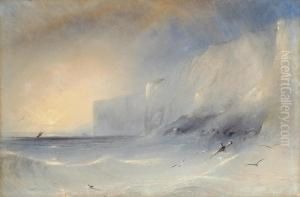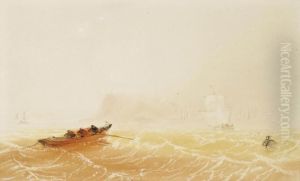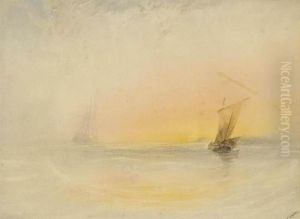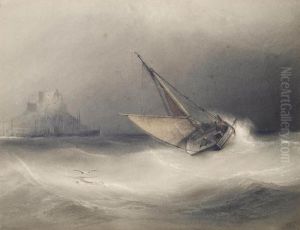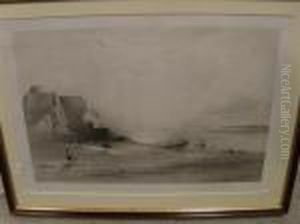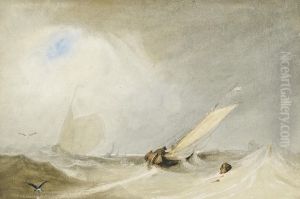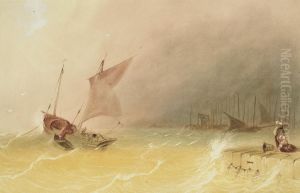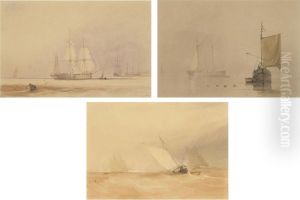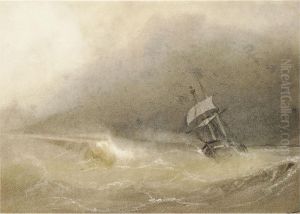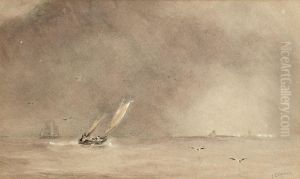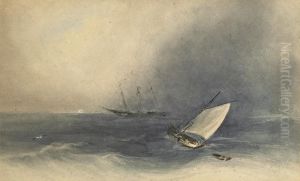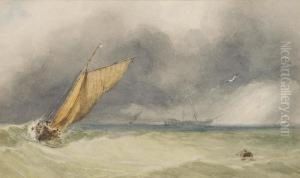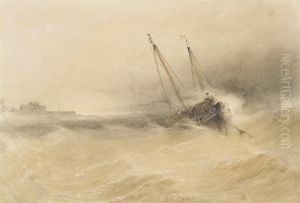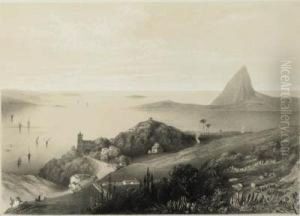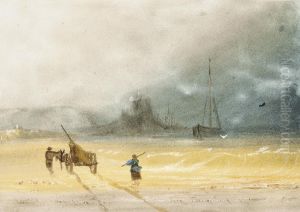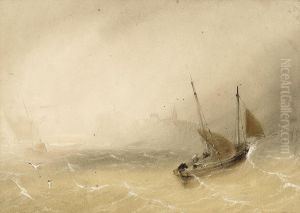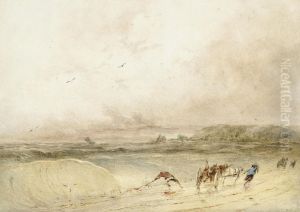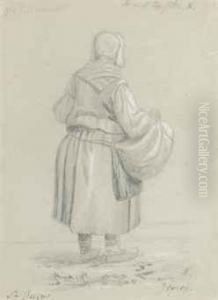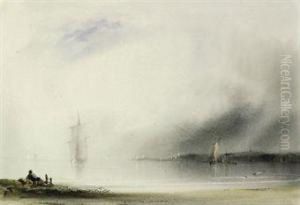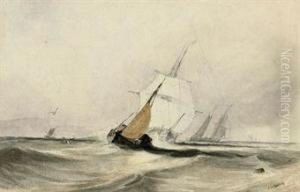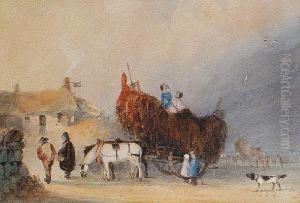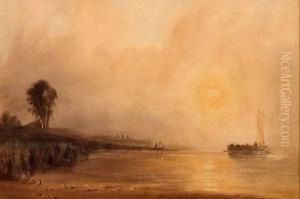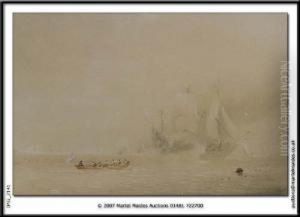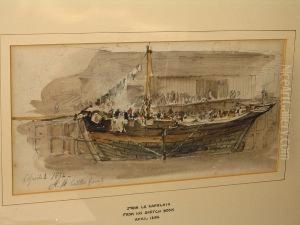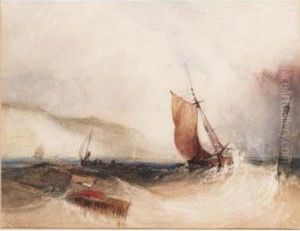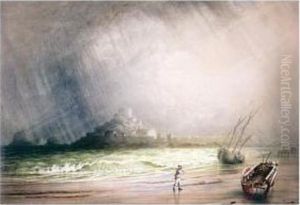John Le Capelain Paintings
John Le Capelain was a British artist known for his watercolor paintings and drawings. Born in 1812, in St. Helier on the island of Jersey, Le Capelain was part of the thriving British art scene during the 19th century. Despite his relatively short life, he made a significant impact through his detailed and atmospheric landscapes.
Le Capelain's early life was marked by his artistic talent, which was recognized and nurtured from a young age. He studied art in London and exhibited his work at the British Institution and the Royal Academy of Arts. His style was characterized by a romantic sensibility, evident in his choice of dramatic landscapes and historical scenes. Le Capelain was particularly adept at capturing the effects of light and weather, which added a dynamic quality to his work.
In 1840, Le Capelain was commissioned to produce a series of views of Jersey, a project which resulted in some of his most famous works. These pieces showcased his ability to depict the natural beauty and unique character of the island's scenery. The series was well-received and contributed to his growing reputation as a skilled landscape painter.
Le Capelain's career was, however, cut short by illness. He contracted tuberculosis, which severely affected his health and productivity. Despite this, he continued to work and produced a remarkable series of illustrations for 'The Waverley Album', based on the novels of Sir Walter Scott, which were highly praised for their imagination and sensitivity.
John Le Capelain's artistic legacy is largely associated with his contributions to British watercolor painting and his unique portrayal of Jersey's landscapes. His works are collected and exhibited in various institutions, including the Victoria and Albert Museum in London and the Jersey Museum and Art Gallery. Sadly, Le Capelain died at a young age in 1848, but his work continues to be celebrated for its technical skill and evocative beauty.
